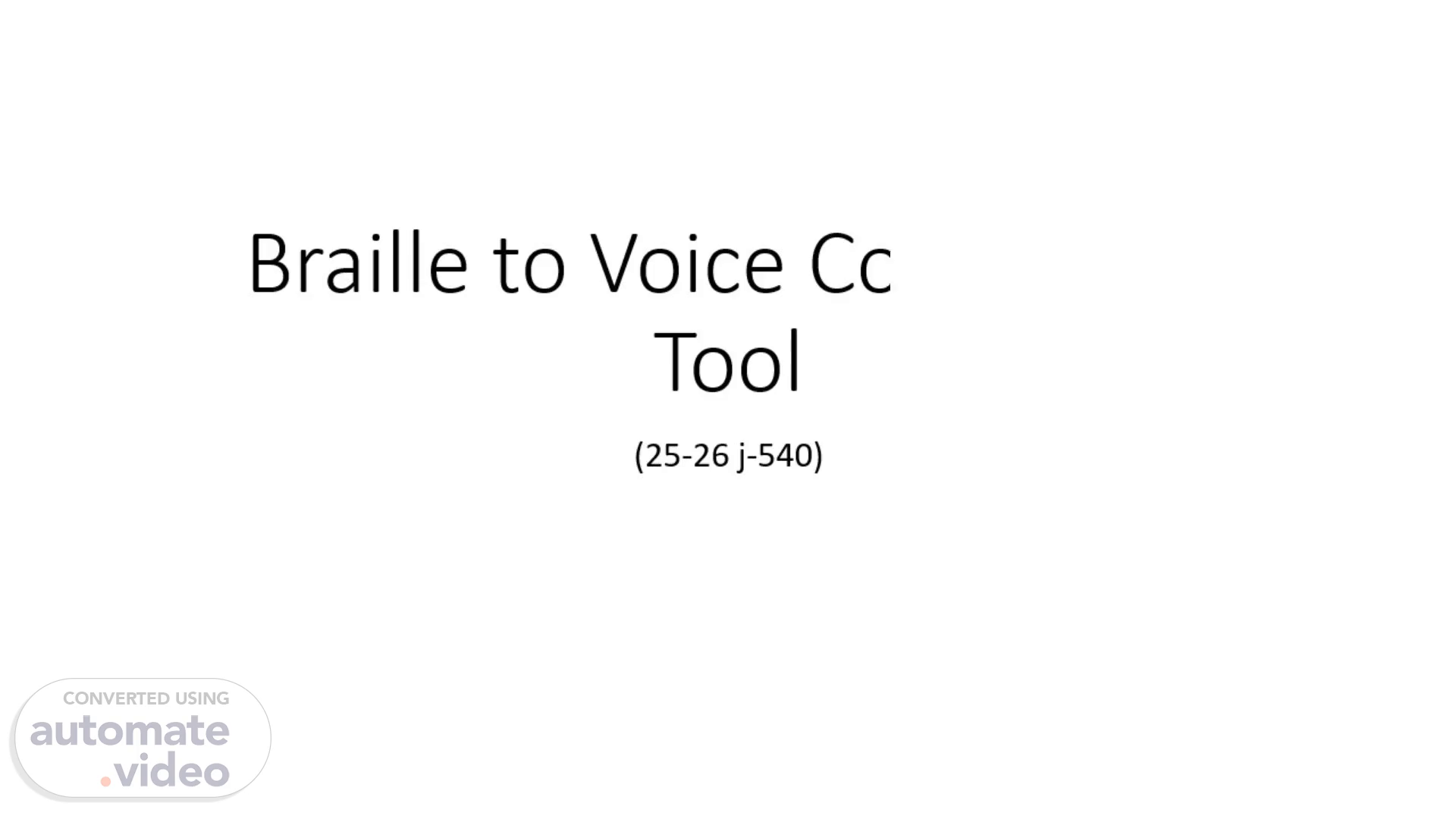
Braille to Voice Conversion Tool
Scene 1 (0s)
Braille to Voice Conversion Tool. (25-26 j-540).
Scene 2 (7s)
Introduction to the problem. In our everyday lives, we are witnessing a lot of visually impaired people in our community. These people face difficulties with their regular actions such as reading, walking, driving, socializing and writing. Globally, WHO estimates that the number of people with visual impairment (presenting vision) is 285 million of these, 246 million have low vision and 39 million are estimated to be blind. In Sri Lanka, it reached up to 1.6 million visually impaired and 34 thousands of completely blind..
Scene 3 (32s)
Introduction to the problem cont.. Visually impaired individuals face significant challenges in accessing printed materials. While Braille provides a tactile reading system. Reading Braille is static, requires manual reading, and cannot be easily accessed in real-time, especially for complex texts such as mathematics or multiple languages. Printed Braille materials are often bulky, expensive, and not easily available..
Scene 4 (50s)
Importance and impact of Solving the Problem. Access to information is a fundamental right, but visually impaired individuals often struggle to read Braille due to its tactile nature. The lack of skilled Braille readers, and the difficulty of reading complex texts like mathematics or other languages. Enhance accessibility by Provide real-time access to printed materials, making education, professional work, and daily life easier for visually impaired users. Support education and learning by allow students to access textbooks, study materials, and complex content like formulas or multilingual texts instantly. empower visually impaired people to participate more actively in society..
Scene 5 (1m 18s)
Previous Research and Its Shortcomings. Early approaches mainly relied on manual input methods or simple optical scanners that converted Braille to text. Some systems used basic image processing and OCR techniques, but their accuracy was often low, especially when dealing with complex symbols, multi-line Braille texts, or mathematical notation. Many existing solutions also suffer from limited language support..
Scene 6 (1m 37s)
Approach to Address the Shortcomings. Enhanced Image Processing Use high-resolution cameras and advanced pre-processing techniques (such as noise removal, contrast enhancement, and dot segmentation) to accurately capture Braille patterns even under poor lighting or on worn documents. Multi-Language and Complex Symbol Support Extend the recognition model to handle multiple languages and specialized notations (like math or scientific symbols) Advanced Text-to-Speech (TTS) Integrate natural-sounding TTS engines capable of reading recognized content clearly and fluently in different languages.
Scene 7 (1m 59s)
Constraints and Limitations. The system accuracy highly depends on the quality of the captured image. Poor lighting, blurred images, or low-resolution scans can lead to misinterpretation of Braille dots. Recognizing mathematical notations, scientific symbols, and special characters remains challenging. Language support limitations heavily support common languages. Large, diverse, and annotated Braille image datasets are rear..
Scene 8 (2m 18s)
System Diagram.
Scene 9 (2m 25s)
THANK YOU.